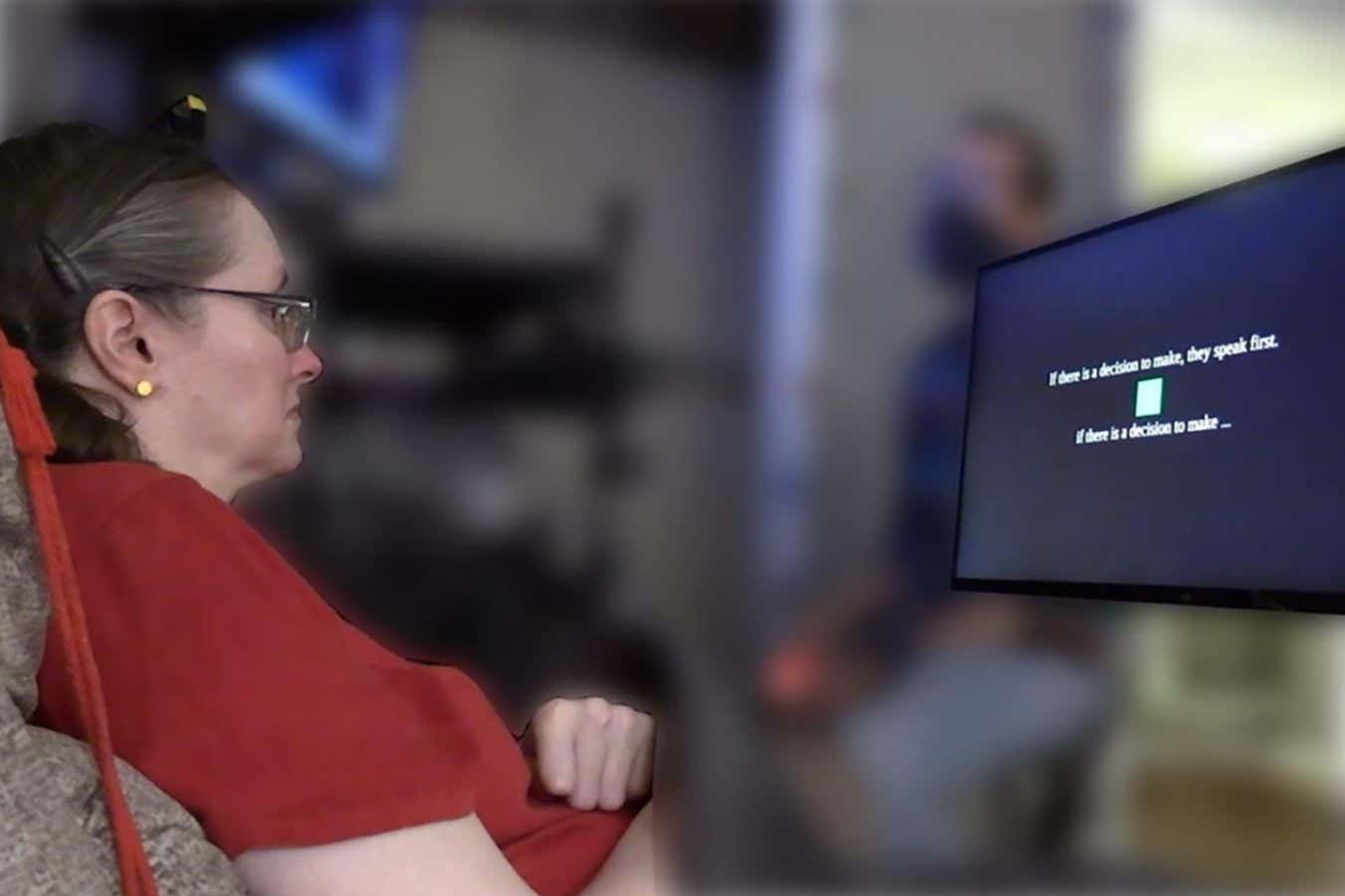A brain-computer interface has enabled people with paralysis to turn their thoughts directly into words, requiring less effort than older techniques where a physical attempt at speech had to be made
By Christa Lesté-Lasserre
14 August 2025
Someone with paralysis using the brain-computer interface. The text above is the cued sentence and the text below is what is being decoded in real-time as she imagines speaking the sentence
Emory BrainGate Team
People with paralysis can now have their thoughts turned into speech just by imagining talking in their heads.
While brain-computer interfaces can already decode the neural activity of people with paralysis when they physically attempt speaking, this can require a fair amount of effort. So Benyamin Abramovich Krasa at Stanford University and his colleagues sought a less energy-intensive approach.
Read more
Take control of your brain's master switch to optimise how you think
Advertisement
“We wanted to see whether there were similar patterns when someone was simply imagining speaking in their head,” he says. “And we found that this could be an alternative, and indeed, a more comfortable way for people with paralysis to use that kind of system to restore their communication.”
Abramovich Krasa and his colleagues recruited four people with severe paralysis as a result of either amyotrophic lateral sclerosis (ALS) or brainstem stroke. All the participants had previously had microelectrodes implanted into their motor cortex, which is involved in speech, for research purposes.
The researchers asked each person to attempt to say a list of words and sentences, and also to just imagine saying them. They found that brain activity was similar for both attempted and imagined speech, but activation signals were generally weaker for the latter.
